[ad_1]
LinkedIn, with its 810 million+ users, is a goldmine for marketers. Per reports, it’s estimated that 61 million users are senior level influencers and 40 million are in decision-making positions, making them a valuable business audience. These influential individuals are willing to spend four times as much money compared to the average internet user.
LinkedIn’s primary value lies in its focus on business-to-business (B2B) interactions. The platform is home to business owners and employees alike. In fact, 65% of B2B organizations have used LinkedIn ads to attract customers, and 45% of marketers have done the same.
In this guide, we’ll explore the various ad formats available on LinkedIn, how to create an effective LinkedIn ad, and provide some advice on improving your clickthrough and conversion rates.
How to Start Advertising on LinkedIn: A Step-by-Step Process
First things first:
Let’s understand how to start advertising on the platform before we dive into the various different sub-sections.
Create a LinkedIn Page: Before you can start advertising, you need to have a LinkedIn Page for your business. Thereafter, sign into the LinkedIn Campaign Manager (it only takes a few seconds to create one, in case you haven’t signed up for it.)
Choose Your Objective: LinkedIn offers several objectives for your campaign, such as brand awareness, website visits, engagement, lead generation, etc. Choose the one that aligns with your business goals.
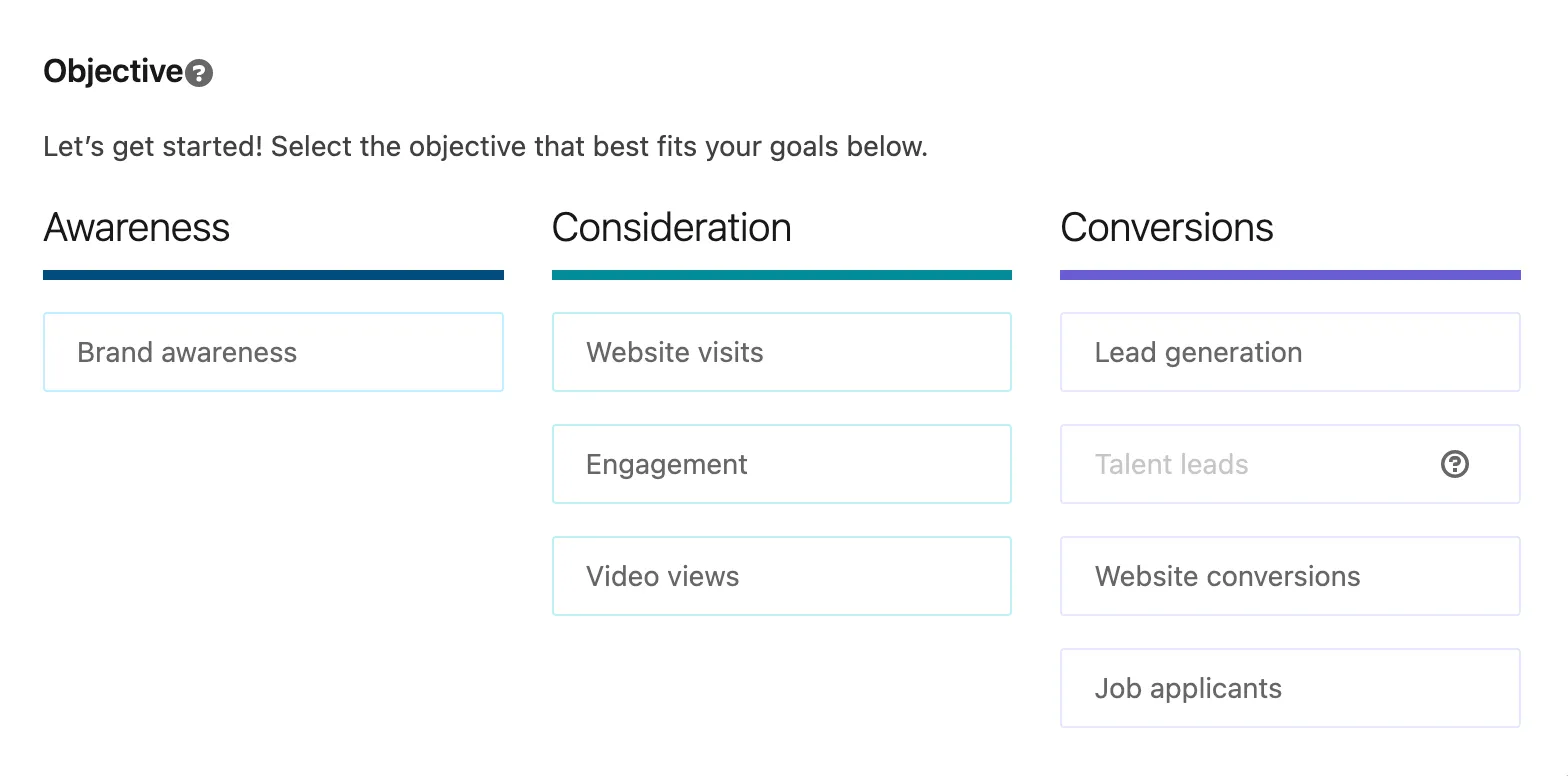
Nail Your Ad Target Audience: Use LinkedIn’s targeting options to define your audience based on their location, job title, industry, etc.
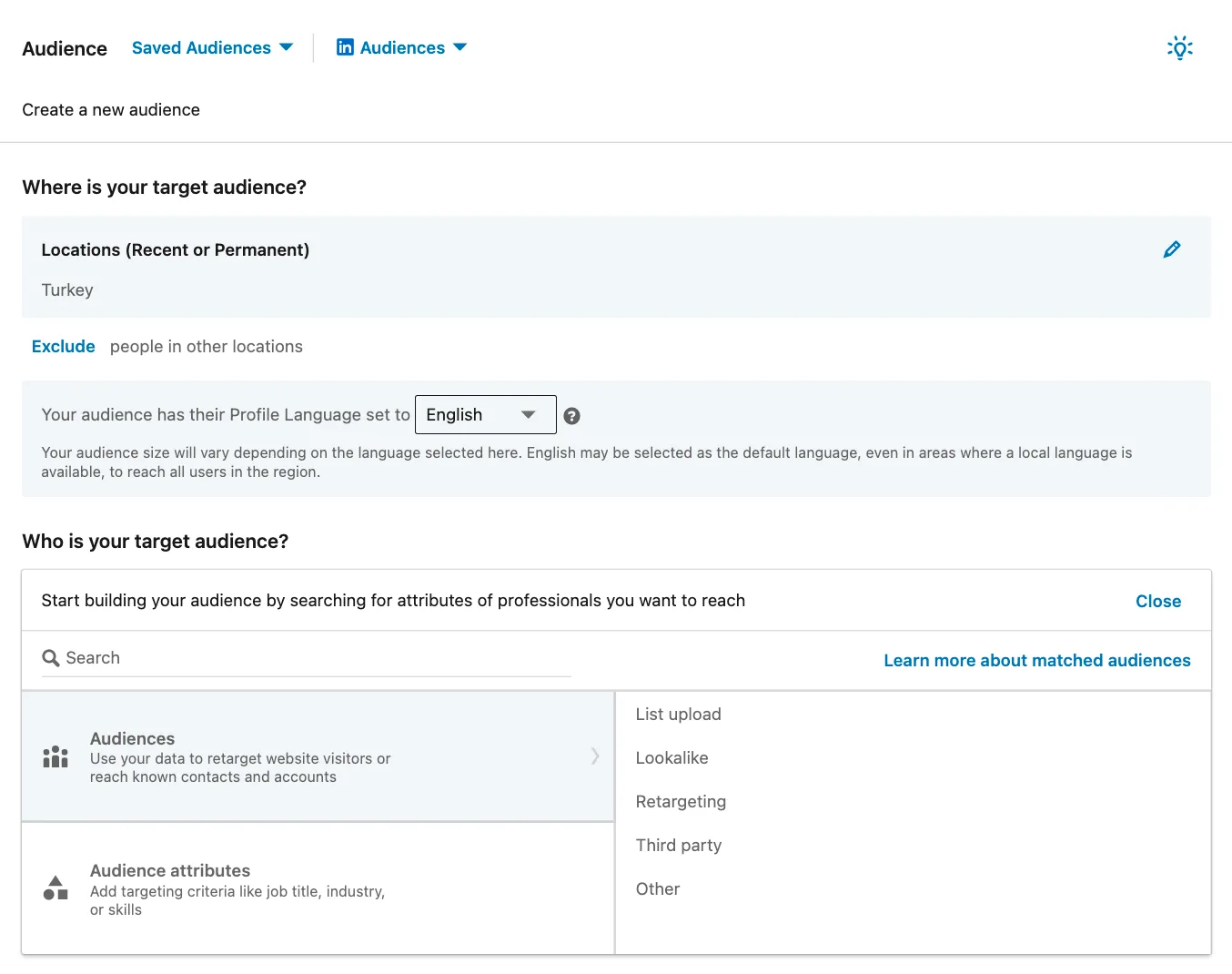
Choose Your Ad Format: LinkedIn offers several ad formats, such as Sponsored Content, Message Ads, Dynamic Ads, and Text Ads. Choose the one that suits your campaign objective and target audience.
Set Your Budget: LinkedIn advertising budgets are flexible and can be customized in terms of overall spending, daily allotments, and bid amounts. You can set budgets per function, choosing to pay per click, per mile, or per send. To run successfully on both daily and total budget plans, your ad budget should at least be $10 per day or $20 per week.
Create Your Ad: Write a compelling ad copy and use high-quality visuals to attract your audience.
Measure and Optimize: Use LinkedIn’s analytics tools to measure the performance of your ad and make necessary adjustments to improve its effectiveness.
LinkedIn Ad Formats
LinkedIn offers a variety of ad formats tailored to specific business needs and marketing approaches. Let’s delve into these formats and their requirements.
1. Dynamic Ads
LinkedIn dynamic ads allow you to create highly customized ads for a variety of campaigns. You can increase your LinkedIn following, advertise job openings, and generate leads with downloadable content.
Adding the viewers’ names and photos makes the advertisement more relevant and engaging. LinkedIn does this automatically, saving you the hassle of creating customized adverts for each customer.
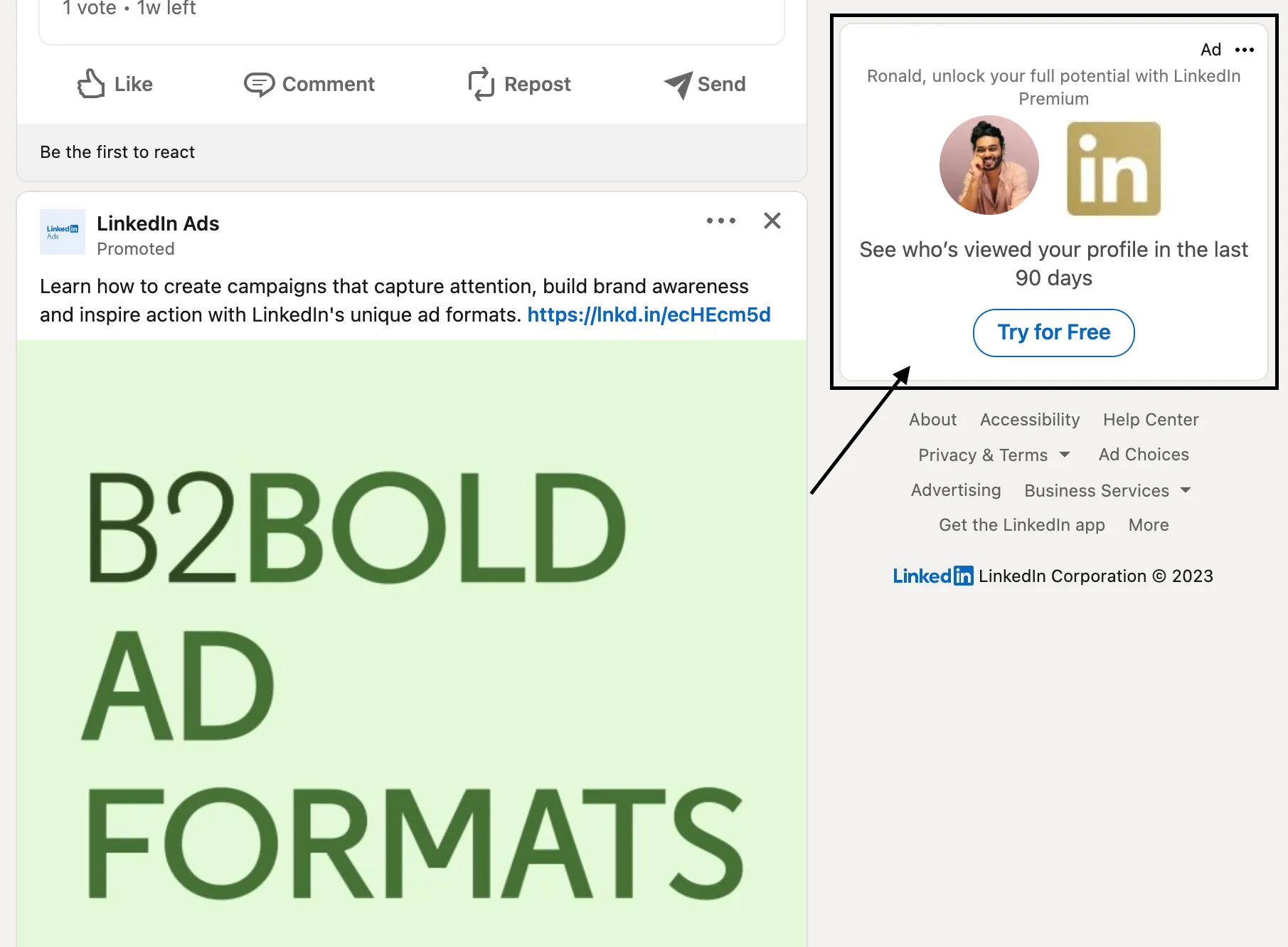
Ad Guidelines for Dynamic Ads:
- Shorten your secondary call-to-action to under 70 characters.
- Primary call to action should be no longer than 50 characters.
- The minimum size for the logo is 100 pixels by 100 pixels.
- There shouldn’t be more than 25 characters in the business name.
2. Text Ads
Text ads are found on the right side of your LinkedIn news feed. These ads can contain just text or text and a small image. LinkedIn suggests you upload an image as part of your profile.
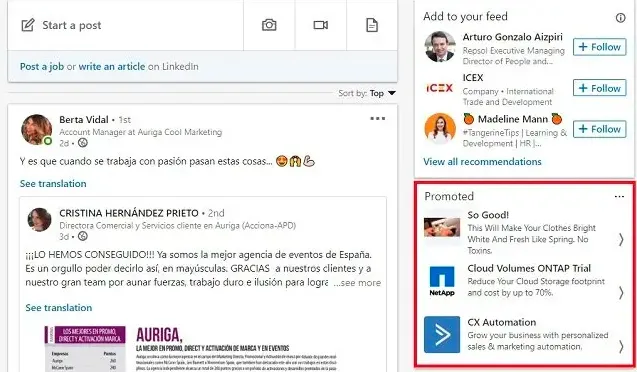
Ad Specifications for Text Ads:
- Photos must be 100 pixels square.
- Subject lines shouldn’t exceed 100 characters.
- Descriptions should ideally be no longer than 75 characters.
3. Sponsored Content
LinkedIn sponsored content looks just like a regular post that you’d see on your feed except with a CTA button and a “promoted” label.
You can choose from five different formats of sponsored content — single image, carousel, video, event, and document. It’s better to switch between the options every once in a while to compare their performances and see which one works best with your audience.
Single Image Ads: These ads consist of a single image and are typically used to promote a product or service, increase brand awareness, or drive website traffic.
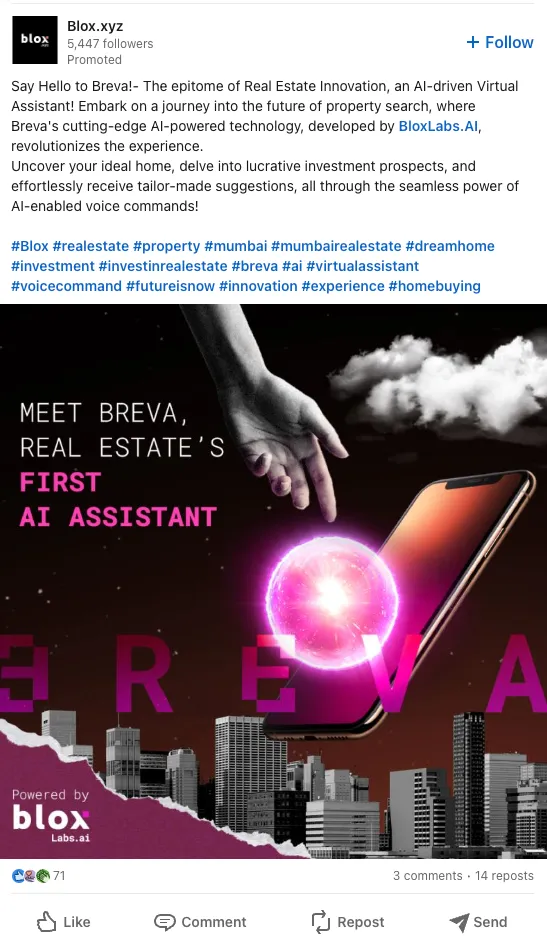
Video Ads: These ads include video and are typically used to demonstrate how a product or service works, tell a brand story, or increase engagement.
Carousel Ads: These ads include a series of images or videos that users can swipe through. Carousels are typically used to showcase multiple products, services, or ideas, or tell a story in slideshow format.
Event Ads: These ads allow businesses to promote upcoming events like webinars, conferences, and meetups. They include date, time, and location details, and a call-to-action to register or attend the event.
Ad Guidelines for Sponsored Content:
- Ideally, the aspect ratio of your images would be 1.91:1. There must be at least 400 pixels of width.
- Ideally, the total size of your images wouldn’t be more than 5 MB.
4. Sponsored Messaging
Sponsored messages allow you to reach out to your desired LinkedIn contacts directly. These messages have the potential to yield impressive conversion rates due to their targeted nature.
There are two types of sponsored messages: message ads and conversation ads. Message ads typically direct a user to a landing page to sign up for a service or make a purchase. On the other hand, conversation ads are designed to spark engaging dialogues that eventually lead to sales.
Below is an example of a conversation ad.
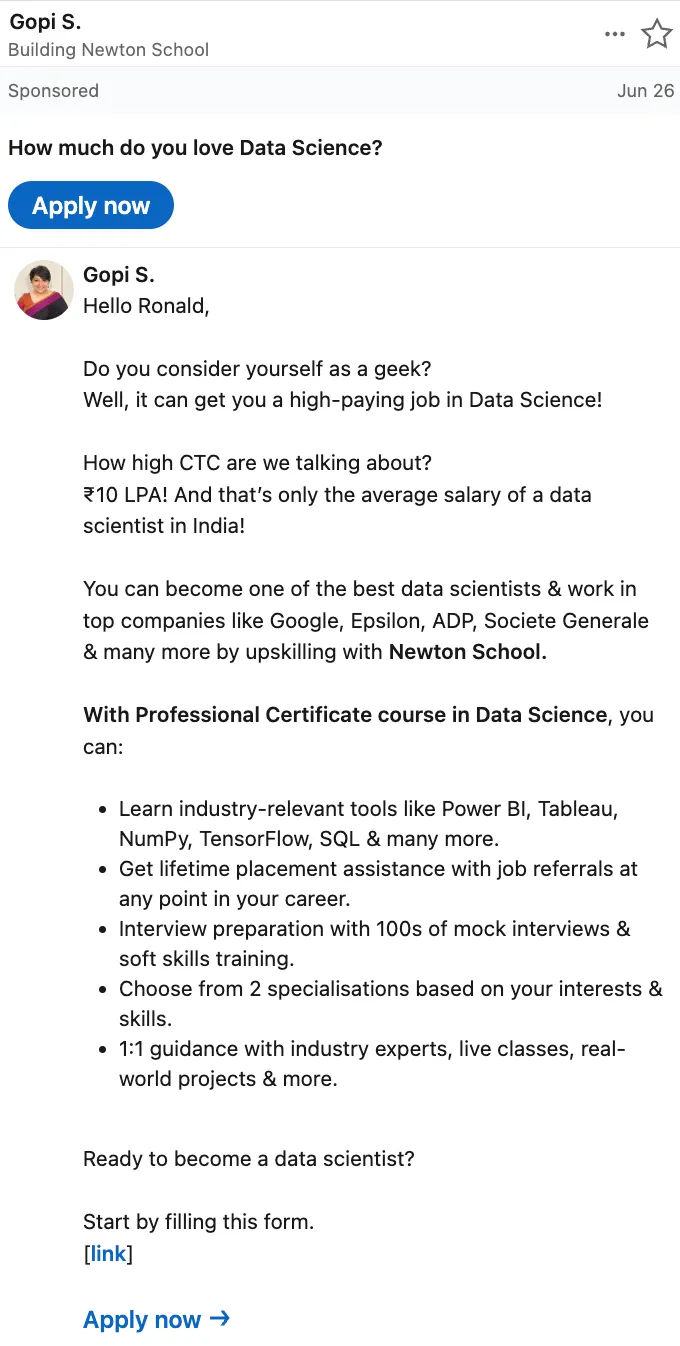
Ad Guidelines for Sponsored Messaging:
- Maximum length of message (text) is 1500 characters.
- Three additional links are allowed. Link anchor text must be under 70 characters.
- Ad banners need to be 300px wide and 250px tall.
- Maximum size for uploaded image is 40KB.
Guidelines for Successful LinkedIn Ads
Now that you’re familiar with the various LinkedIn ad options and have a sense of how much to allocate toward them let’s dive into the best practices for LinkedIn ads.
1. Define Your Target Audience
Understanding your target audience is the first and most crucial step in creating a successful LinkedIn ad campaign.
LinkedIn’s ad platform provides a wealth of targeting options, allowing you to narrow down your audience based on their location, company details, demographics, education, job experience, and interests.
For instance, if you’re a software company selling project management tools, you might want to target project managers in mid to large-sized companies. You could further refine your audience by focusing on specific industries or regions.
However, it’s important not to get overly specific with your targeting.
If you’re new to LinkedIn ads, start with broader targeting and gradually refine your audience based on the performance of your ads. Remember, the goal is to reach the people most likely to be interested in your product or service, and LinkedIn’s targeting options make this possible.
2. Choose the Right Ad Format
LinkedIn offers a variety of ad formats, each designed to serve a specific purpose. These include Sponsored Content, Text Ads, Sponsored Messaging, Dynamic Ads, and more.
The choice of ad format should align with your campaign objectives and audience preferences.
For example, if your goal is to increase brand awareness, Sponsored Content might be the best choice. This ad format appears directly in your target audience’s news feed, making it more likely to be seen and engaged with.
On the other hand, if your goal is to generate leads or drive conversions, Sponsored Messaging might be a better choice. This ad format allows you to send personalized messages directly to your target audience’s LinkedIn inbox, providing a more direct and personal way to engage with potential customers.
3. Craft Clear and Compelling Ad Copy
The success of your LinkedIn ad campaign largely depends on the quality of your ad copy. It should be clear, compelling, and concise, with a strong call-to-action (CTA). Your audience should know exactly what you’re offering and what they should do next.
For instance, if you’re promoting a free webinar, your ad copy might read: “Join our free webinar to learn the latest digital marketing strategies. Register now to secure your spot!” This ad copy clearly communicates the offer (a free webinar on digital marketing strategies) and includes a strong CTA (“Register now”).
Remember, your ad copy is your opportunity to convince your audience that your offer is worth their time and attention, so make it count.
4. Use High-Quality Visuals
Visuals are crucial to any ad campaign, and LinkedIn ads are no exception. Whether you’re using Single Image Ads, Carousel Ads, or Video Ads, your visuals should be high-quality and relevant to your ad copy.
For instance, if you’re promoting a new product, you might use a high-quality image of the product or a short video demonstrating its features.
Visuals can capture your audience’s attention and make your ad more engaging. However, ensuring that your visuals align with your brand and are consistent across all your ads is important. This can help improve brand recognition and make your ads more effective.
5. Monitor and Optimize Your Ads
Once your LinkedIn ad campaign is live, monitoring its performance and making necessary adjustments to improve its effectiveness is important.
LinkedIn’s Campaign Manager provides detailed metrics to help you understand your ads’ performance. These insights can help you identify what’s working and what’s not, allowing you to optimize your ads for better results.
For instance, if you notice that your ad is getting a lot of impressions but a few clicks, this might indicate that your ad copy or visuals aren’t compelling enough. In this case, you could test different ad variations to see which performs better.
Remember, continuous testing and optimization are the key to a successful ad campaign.
6. Leverage LinkedIn’s Unique Features
LinkedIn offers unique features that can help enhance the effectiveness of your ad campaign. These include Lead Gen Forms and Matched Audiences.
Lead Gen Forms make it easier for users to share their contact information, helping you generate more qualified leads. They pre-fill the user’s LinkedIn profile data, reducing the effort required to fill out the form and increasing the likelihood of form submission.
Matched Audiences, on the other hand, allow you to retarget people who’ve visited your website or upload a list of email contacts. This can help you reach people who’ve already shown interest in your product or service, increasing the chances of conversion.
7. Test and Learn
The initial weeks of your campaign are typically a learning phase. Testing different targeting criteria, ad formats, and ad copies is important to learn what works best for your brand.
For instance, you might start by testing two ad copies to see which resonates more with your audience. Once you’ve identified the winning ad copy, you could then test different visuals or targeting criteria.
The goal is continuously learning and improving your campaign based on your findings. Remember, what works for one brand might not work for another, so finding what works best for your specific brand and audience is important.
How to Leverage SocialPilot for Your LinkedIn Ads
SocialPilot isn’t just a tool, it’s your sidekick in the world of social media advertising. The platform is designed to make your life easier, your campaigns more effective, and your results more measurable.
Here’s how you can use it to supercharge your LinkedIn advertising efforts:
Scheduling Your Ads: Timing is everything in advertising. With SocialPilot, you can schedule your LinkedIn ads in advance, ensuring they go live when your audience is most active. No more guesswork, no more missed opportunities. Just set it and forget it, and let SocialPilot handle the rest. It’s like having your own personal ad manager, working around the clock to get your content in front of the right people at the right time.
Analyzing Performance: But SocialPilot isn’t just about making things easier, it’s about making them better. With its detailed analytics, you can dive deep into the performance of your ads.
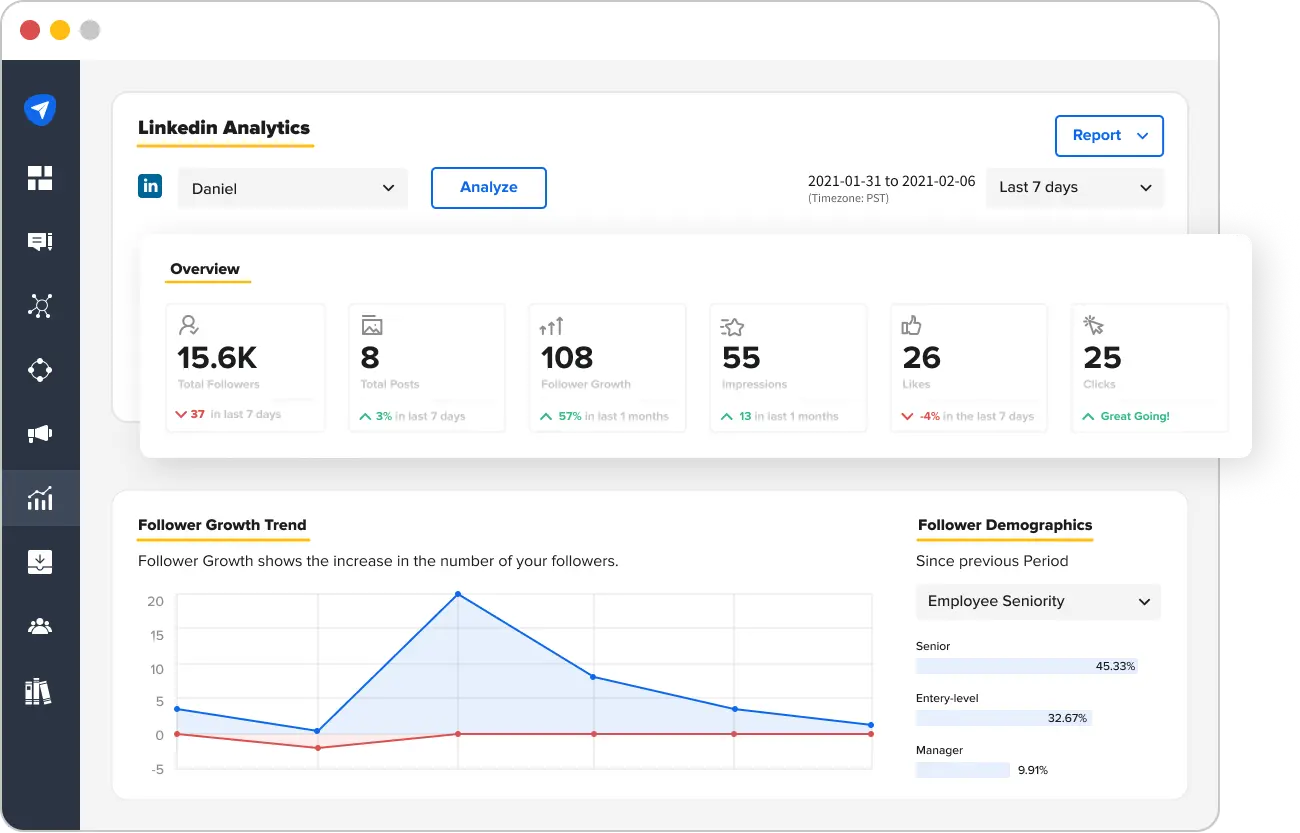
Find out what’s working, what’s not, and why. Use these insights to fine-tune your campaigns, optimize your ad spend, and maximize your ROI. It’s like having your own personal data analyst, crunching the numbers and delivering the insights you need to make smarter decisions.
Managing Multiple Accounts: If you’re juggling multiple LinkedIn accounts, SocialPilot is a game-changer. Manage all your accounts from a single dashboard, saving you time and reducing the risk of errors. It’s like having your own personal command center, giving you a bird’s eye view of all your LinkedIn advertising activities.
Conclusion
LinkedIn advertisements offer a powerful way to reach a professional audience.
By understanding your target demographic, setting your objectives, allocating resources, and selecting the appropriate ad formats, you can maximize the effectiveness of your LinkedIn ads.
It’s imperative that you create engaging content, warm up your audience, keep your ads concise, and always test your ads for the best results.
[ad_2]
Source link









